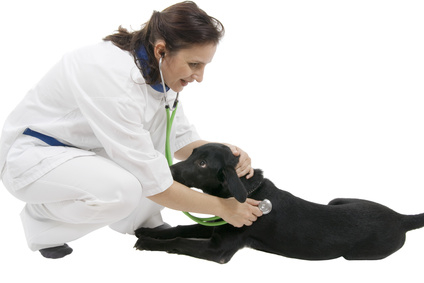What Are Dog Skin Allergies Symptoms And Treatment
We need to be aware of dog skin allergies as they are quite common and can be very unpleasant for the animal. In most instances an allergy will cause severe itchiness of the skin but can also cause weeping eyes, patches of reddened skin and damage to the dogs coat.
Like humans dogs can become allergic to just about anything though the most common allergies are food and skin related though environmental allergies, for example pollen, can also affect many dogs.

Allergy Testing
We will discuss the allergies themselves shortly but firstly we will look at how vets go about testing for environmental allergies and isolating the causes. Testing will take the form of blood or skin tests.
With blood tests the aim is to find and identify the antibodies that cause the allergic reaction whilst skin testing involves injections of common allergic properties onto the dogs skin to see which causes a reaction.
Allergies can be controlled by various means but the most common way of combating dogs skin problems caused by allergies is with hyposensitisation treatment.
What Is Hyposensitisation Treatment
It sounds complicated and terribly medical but it isn't really. Basically hyposensitisation treatment is the label given to gradually building up a dogs tolerance to the allergen he is suffering from by regularly injecting small doses of the allergen.
Over the cause of the treatment his immune system will gradually built up resistance to the allergen until it is no longer a problem. Hyposensitisation treatment is a common way in which to combat dog skin allergies.
Common Canine Skin Allergies
Food Allergies
Dog skin allergies caused by food are more common than people may realise. A dog won't become allergic to one brand of food but may develop an allergy to a particular ingredient or component of food. Dog food allergies will result in a very itchy skin and cause intense irritation for the dog.
Identifying that single ingredient is problematical but is usually achieved by feeding the dog specially formulated hypoallergenic food. No other food or treats should be given to the dog over a period of around four weeks. This should eradicate the problem.
The owner then faces the decision of whether to continue the strict diet of just hypoallergenic food or to begin introducing other food in a bid to identify the ingredient that the dog is allergic to.
Other Allergies
Some canine skin allergies can occur because of inhalation or contact with allergens. Contact allergies can vary enormously in their causes. For example a chemical may have been sprayed on a field in which he has played, dust particles may have settled on his skin or he may have a reaction to a parasite or its saliva.
Allergens such as pollen or dust can also be inhaled either through the nose or mouth and this will manifest itself by causing a skin infection such as Pyoderma.
Atopy
The catch all name for dog skin allergies that result in skin disease. Isolating the causes of the problem can be done through either blood or skin tests or possibly by changing the dogs environment - avoid certain fields or the yard. Tests can also be done on the grass and pollens found in the yard or garden at home.
As we mentioned earlier most allergies can be resolved by hyposensitisation treatment though this could be used in conduction with other treatments such as antihistamines to reduce the degree of reaction and fatty acid food supplements to boost the health of the dogs skin.
In some extreme cases steroids may be used to eliminate the inflammation and soreness that the dog is suffering from.
Related Articles
Dog Skin Allergies And Other Problems